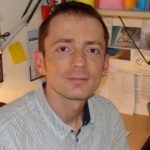Link to Pubmed [PMID] – 27802165
J. Cell. Sci. 2016 12;129(23):4366-4378
Understanding the effect of an ever-growing number of human variants detected by genome sequencing is a medical challenge. The yeast Saccharomyces cerevisiae model has held attention for its capacity to monitor the functional impact of missense mutations found in human genes, including the BRCA1 breast and ovarian cancer susceptibility gene. When expressed in yeast, the wild-type full-length BRCA1 protein forms a single nuclear aggregate and induces a growth inhibition. Both events are modified by pathogenic mutations of BRCA1. However, the biological processes behind these events in yeast remain to be determined. Here, we show that the BRCA1 nuclear aggregation and the growth inhibition are sensitive to misfolding effects induced by missense mutations. Moreover, misfolding mutations impair the nuclear targeting of BRCA1 in yeast cells and in a human cell line. In conclusion, we establish a connection between misfolding and nuclear transport impairment, and we illustrate that yeast is a suitable model to decipher the effect of misfolding mutations.


